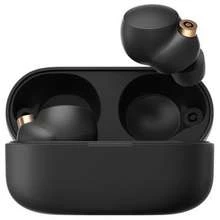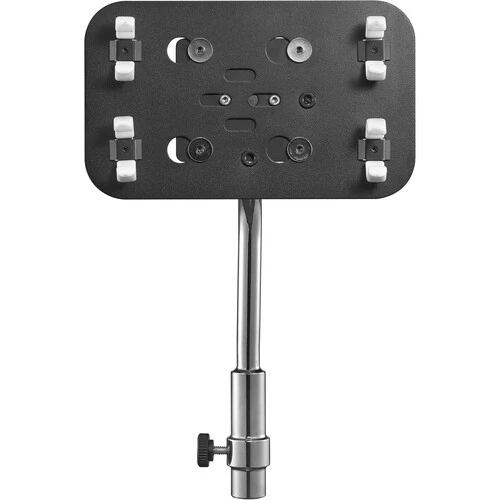VANGUARD VEO ACTIVE 53
KHAKI GREEN
- SCORE 8+
KODE BARANG : 071024B
SCORE / NILAI KONDISI BARANG INI ADALAH
8+ = Item ini menunjukan bekas penggunaan dan terdapat baret medium
BERIKUT ADALAH TABEL SCORE BARANG USED ITEM DI DOSS
10 = Item ini sudah dimiliki sebelum nya tapi tampak seperti barang baru
9+ = Item ini menunjukan sedikit tanda penggunaan atau tidak ada tanda - tanda pengunaan sama sekali
9 = Item ini menunjukan ada nya tanda penggunaan tetapi sangat bersih
8+ = Item ini menunjukan bekas penggunaan dan terdapat baret medium
8 = Item ini menunjukan bekas penggunaan yang sering dan terdapat penyok / baret
7 = Item ini menunjukan bekas penggunaan yang cukup banyak atau lebih dari penggunaan pada biasa nya
KONDISI FISIK & FUNGSI :
KONDISI SCORE = 8+
Minus Kondisi :
- ADA SEDIKIT NODA PADA TAS
KELENGKAPAN :
- BAG ONLY
Setiap Pembelian USED ITEM* dari DOSS akan mendapatkan GARANSI FUNGSI 1 BULAN
.
* = USED ITEM YANG BERGARANSI RESMI DARI BRAND DAN BUKAN GARANSI TOKO ATAU INTERNASIONAL
.
Pembelian dengan Cicilan 0% , kamu dapat mengunjungi Toko Online DOSS yg ada di :
- Tokopedia
COD :
DOSS RATU PLAZA
Same Day Delivery
Gojek & GRAB
Godox SB-GUE95 Overview
Key Features
- Soft Wraparound Quality of Light
- Fabric Grid for Directional Control
- For All Godox Full Size Flash Heads
- Widely Compatible Bowens Speed Ring
Compatible with all Godox flash heads that have Bowens front accessory mounts, this Octa Softbox with Bowens Speed Ring and Grid from Godox measures 37.4" and provides a soft, pleasing quality of light. The softbox has a large surface area to offer a wraparound effect, especially when used close up. This shape produces natural-looking catchlights in the eyes of your subject. The included fabric grid mounts to the softbox with touch-fasteners and provides directional control of the output, keeps light from the background, and allows you to light specific areas of the subject.
Zoom H6 Overview
Key Features
- Live/Location Recording & Podcasting
- Swappable X/Y Stereo Mic Capsule
- 4 x XLR-1/4" Mic/Line Inputs with Pads
- Fast, User-Friendly Operability
- Records in WAV up to 96 kHz
- 3.5mm Line & Headphone Outputs
- Onboard Compressor & Low-Cut Filter
- Powered via Batteries, AC, or USB
- Supports SDXC Cards up to 128GB
- Stereo Safety Track Recording
While the original gray H6 is bundled with two mic capsules and premium accessories, the Zoom H6 All Black portable handheld recorder features a sleek black finish and a single mic capsule, making ideal for bands, multi-instrumentalists, and podcasters who don't immediately need the extras. with its X/Y stereo microphone capsule, six versatile mic/line inputs, and up to 6-track recording, the H6 All Black is both user-friendly and easily expandable.
Like other H-Series Handy recorders such as the H4n Pro and H5, you can hold it in your hand, attach it to a mic stand or tripod, or mount it to a camera (shoe mount available separately); the H6 All Black packs an impressive array of features into a rugged, rubberized body that's more than ready to meet the varied demands of musicians, content creators, videographers, and sound designers.
From the intuitive, tactile controls to the plentiful battery life and powerful audio processing functions, the H6 All Black is well equipped for producing pristine audio for complete musical arrangements, independent films, and panel podcasts. It can supply phantom or plug-in power for condenser mics, or accept direct connections from synths, keyboards, drum machines, or +4 dB line-level mixers. No matter the source, Selectable auto-recording and pre-recording ensure that you'll never miss the start of a take, and stereo safety track recording provides duplicate tracks at a lower level to avoid distortion.
Original H6 vs H6 All Black
Whereas the original H6 sports a gray finish, two interchangeable stereo mic capsules, and premium accessoriesâa protective case, a foam windscreen, and a USB cable, the H6 All Black 2020 Version is presented in a sleek, solid black finish and includes a single stereo mic capsule. Both versions include four AA batteries for powering the H6 on the go.
Fast, User-Friendly Operability
The H6 All Black's front panel is ergonomically arranged with its most essential and commonly used controlsâtransport buttons for record, play/pause, stop, back, and forward operations, individual record-arm buttons that double as mute switches during playback, large gain knobs, and pad switches. for added safety, a hold switch disables all front-panel buttons to prevent accidental operation during recording.
Day or night, view vital information such as audio levels, recording time, battery status, and more on the 2" full-color LCD, which happens to be backlit and angled for maximum visibility.
Instant Access to Gain Adjustments
Each H6 input has its own dedicated gain control knob. There's no track Selection or button pressing required to optimize your recording levels; just turn the dials (clearly labeled from 0 to 10) anytime you need to adjust the gain. If your XLR-1/4" input sources are so loud that you need even less gain than the preamps provide at the "0" setting, use four front-panel pad switches to attenuate the combo inputs by 20 dB.
X/Y Stereo Microphone Capsule
Leave your external mics at home and travel light; the H6 All Black includes a stereo microphone capsule (the original H6 includes two interchangeable capsules). with nothing more than the H6, you're set to record a variety of sources, even ear-rattling ones up to 136 dB!
The matching black X/Y capsule provides clear, phase-accurate capture in two different X/Y positionsâ90° for a tight stereo image or 120° for a wider perspective. Just twist the capsules to their premarked positions to switch between the two configurations.
Supports Interchangeable Zoom Mic Capsules
The Zoom mic capsule input on the H6 All Black accommodates Zoom's line of separately available interchangeable capsules, which can be swapped out as easily as the lenses of a camera. with shock-mounted X/Y, Mid-Side, and mono or stereo shotgun mic capsules to choose from, you can be ready to record music, dialog, or sound effects without carting an external microphone setup. Opt for the EXH-6 combo input capsule to accept two additional mic/line signals via XLR-1/4" jacks.
Six Channels of Microphone/Line Inputs
Equipped with four XLR-1/4" combo inputs and a 3.5mm stereo mini-jack input (on the X/Y capsule), the H6 All Black can accommodate condenser microphones, +4 dB balanced line-level sources, or signals from unbalanced instruments with active electronics. Turn on 12, 24, or 48 VDC phantom power to the XLR jacks, or 2.5V plug-in power to the mini jack. Whether you plan on recording studio condenser mics, feeds from wireless receivers, or a lavalier and shotgun mic combo for an interview, the H6 All Black's preamps are ready to deliver low-noise (-120 dB EIN) performance.
Record All Channels Live or Overdub Layers
The H6 All Black boasts 6-channel recording at up to 24-bit / 96 kHz resolution. Record all channels simultaneously or utilize the overdubbing function to add layers of instruments after an initial recording. Adjust levels and pans for your tracks, then use the internal mixdown function to blend six tracks down to a stereo file.
SD Card Recording and Audio Interface Functionality
Maximize portability by recording directly to an SD card (up to 2GB capacity), SDHC card (up to 32GB capacity), or SDXC card (up to 128GB capacity). A 2GB card will yield over 3 hours of 16-bit / 44.1 kHz stereo recording time using the BWF-compliant WAV format for uncompressed audio quality and industry-standard file compatibility. Note that media cards are available separately, and larger capacity cards will increase startup times.
Alternatively, use the H6 All Black as a 6-in / 2-out USB 2.0 audio interface at up to 24-bit / 96 kHz. for audio interface operation with an iPad (Apple Camera Connection Kit required and available separately), Select USB stereo mode, which offers two channels in and out at up to 16-bit / 48 kHz.
3.5mm Outputs for Simultaneous Hookup to a Camera and Headphones
The H6 All Black boasts 3.5mm line and headphone mini-jack outputs for simultaneously feeding your camera/DSLR and a pair of headphones. Independently adjust the headphone volume via the side-panel volume control. for quick playback reference, a built-in monophonic speaker is also provided.
Powered via AA Batteries or AC Adapter
Power the H6 All Black via four included AA batteries, or plug it into a wall outlet with an AD-17 AC adapter (available separately). Alkaline batteries can keep the H6 running for over 20 hours of continuous 16-bit / 44.1 kHz recording using the X/Y mic capsule, or for over 9 hours of nonstop 24-bit / 96 kHz recording using the X/Y mic and the four XLR-1/4" inputs. When using the H6 All Black in the stereo USB audio interface mode, USB bus powering is possible.
Rugged and Portable, Handheld or Mounted
The durable, ergonomic body lends itself naturally to handheld use. Should you need to mount it on a mic stand or tripod, a threaded hole on the back of the H6 All Black obviates the need for stand adapters. Obtain a hot shoe adapter (available separately) to attach the H6 All Black directly to a DSLR.
Signal Processing Adds Sonic Polish
The H6 All Black's onboard effects allow you to add polish to your recordings. Compression and limiting compensate for fluctuations in input level, while a low-cut filter helps eliminate wind noise, blowing, and other kinds of low-frequency rumble. Normalize files for maximum gain, split them into smaller chunks, and even insert up to 99 marks per recording.
There's an onboard metronome and tuner, and you can loop playback and adjust pitch and speed independently, making the H6 All Black an ideal tool for phrase training.
Special Recording Functions
The H6 All Black offers Selectable recording functions designed to prevent you from accidentally missing the start of a performance. By keeping the previous two seconds (one second at 96 kHz) of audio whenever you press the record button, the pre-record option ensures that you'll never cut off the beginning of a great take. Auto-record can automatically start recording when a user-set sound level is detected, making it great for voice-activated recording.
Backup record enables the H6 All Black to automatically record a duplicate of the L/R input with 12 dB less input gain. Even if your original track is distorted, chances are the backup version will be fine!
Supports External Remote Control
Use the RCH-6 remote (available separately in the APH-6 accessory pack) to control the transport, arm tracks, and adjust volume at a distance while eliminating handling noise.
Includes Audio Software
The H6 All Black comes with free download licenses for Steinberg's Cubase LE music production software and WaveLab LE audio editing software, representing a complete audio production toolkit.
Godox ML-H Overview
Convert your MoveLink TX into a handheld microphone with the ML-H from Godox. The smartly designed handle simply slides into the belt clip on the TX (available separately) and allows you to use the microphone/transmitter for wireless man-on-the-street interviews and on-scene video reports.
A foam windscreen is included to reduce breath and wind noise. The 1/4"-20 thread on the bottom lets you attach the ML-H to a small stand (available separately) for tabletop use.
Godox GENIUSMIC UC Overview
Key Features
- Mobile Journalist, Vlogger, Run & Gun
- for USB Type-C Smartphones and Tablets
- Runs on USB Power
- Simple Operation with No Controls
- USB Type-C Male Output Plug
- 3.5mm Headphone Port
- Aluminum Housing Fights RF Disturbance
- Ultracompact and Ultralightweight
- Furry Windshield Minimizes Wind Noise
- Connects Directly to Mobile Device
for vloggers, livestreamers, videographers, and mobile journalists who need a space-saving microphone that provides higher-quality sound capture than their mobile device's built-in mic, the Godox Geniusmic UC offers an ultracompact and affordable solution. This miniature condenser mic connects directly to the USB Type-C port on your smartphone or tablet, no external cabling or mount required. It also features its own headphone output on the rear of the mic body, so you can conveniently monitor your input signal or playback through earbuds or studio headphones.
Since the Geniusmic UC runs on USB power (no batteries required) and has no controls to configure, it ensures easy, user-friendly operation for people of all experience levels. The aluminum housing provides durability, light weight, and effective resistance to interference from RF sources. By incorporating a directional polar pattern, the microphone reduces the pickup of off-axis sound such as ambient noise. Bundled with a foam windscreen and a furry windshield, the Geniusmic UC helps you record audio with less noise from wind whether you shoot indoors or outside.
Ultracompact and Durable
The Geniusmic UC is just 3.1" long and weighs only 1.5 ounces, making it a stealthy companion for your smartphone or tablet. The durable aluminum construction helps to fight against RF disturbance.
Directional Sound Pickup
Utilizing a hypercardioid polar pattern, the Geniusmic UC focuses on sounds in front of it while reducing distracting noises at the sides and to a lesser extent, the rear. This makes it well suited for use in noisy environments and ambience-heavy spaces.
Extended Highs and Strong Output
The Geniusmic UC has an extended frequency response (50 Hz to 20 kHz) and high sensitivity, allowing it to yield detailed audio whether you're recording dialogue, instruments, or nature sounds.
Plug-and-Play Operation
with no need to change or charge batteries, the Geniusmic UC runs on USB power for enhanced convenience. Record quickly and never miss an important moment.
Smartphone Compatibility
The Geniusmic UC features a USB Type-C male plug to enable proper connectivity with smartphones and tablets that have a USB Type-C port.
Headphone Output
with a 3.5mm headphone output on the rear of the mic, it supports monitoring of the input signal (app dependent) or playback while the mic remains connected to your mobile device.
Furry Windshield for Outdoor Shoots
The artificial fur windshield aids in reducing wind noise while protecting the mic from weather and dust. This is especially helpful when shooting outdoors.
Godox GENIUSMIC Overview
Key Features
- Mobile Journalist, Vlogger, Run & Gun
- for Smartphones and Tablets
- Runs on Plug-In Power
- Simple Operation with No Controls
- 3.5mm TRRS Output Plug
- 3.5mm Headphone Port
- Aluminum Housing Fights RF Disturbance
- Ultracompact and Ultralightweight
- Furry Windshield Minimizes Wind Noise
- Connects Directly to Mobile Device
for vloggers, livestreamers, videographers, and mobile journalists who need a space-saving microphone that provides higher-quality sound capture than their mobile device's built-in mic, the Godox Geniusmic offers an ultracompact and affordable solution. This miniature condenser mic connects directly to the 3.5mm headphone port on your smartphone or tablet, no external cabling or mount required. It also features its own headphone output on the rear of the mic body, so you can conveniently monitor your input signal or playback through earbuds or studio headphones.
Since the Geniusmic runs on plug-in power (no batteries required) and has no controls to configure, it ensures easy, user-friendly operation for people of all experience levels. The aluminum housing provides durability, light weight, and effective resistance to interference from RF sources. By incorporating a directional polar pattern, the microphone reduces the pickup of off-axis sound such as ambient noise. Bundled with a foam windscreen and a furry windshield, the Geniusmic helps you record audio with less noise from wind whether you shoot indoors or outside.
Ultracompact and Durable
The Geniusmic is just 3.1" long and weighs only 1.5 ounces, making it a stealthy companion for your smartphone or tablet. The durable aluminum construction helps to fight against RF disturbance.
Directional Sound Pickup
Utilizing a hypercardioid polar pattern, the Geniusmic focuses on sounds in front of it while reducing distracting noises at the sides and to a lesser extent, the rear. This makes it well suited for use in noisy environments and ambience-heavy spaces.
Extended Highs and Strong Output
The Geniusmic has an extended frequency response (50 Hz to 20 kHz) and high sensitivity, allowing it to yield detailed audio whether you're recording dialogue, instruments, or nature sounds.
Plug-and-Play Operation
with no need to change or charge batteries, the Geniusmic runs on plug-in power for enhanced convenience. Record quickly and never miss an important moment.
Smartphone Compatibility
The Geniusmic features a 3.5mm TRRS male mini plug to enable proper connectivity with smartphones and tablets that have a 3.5mm headphone jack.
Headphone Output
with a 3.5mm headphone output on the rear of the mic, it supports monitoring of the input signal (app dependent) or playback while the mic remains connected to your mobile device.
Furry Windshield for Outdoor Shoots
The artificial fur windshield aids in reducing wind noise while protecting the mic from weather and dust. This is especially helpful when shooting outdoors.
Godox LMS-1NL Overview
The LMS-1NL can be carried around easily. The 5.5" gooseneck is flexible to be shaped into any angles during usage. Simply plug it into your transmitter and start recording.
Godox LMS-1N Overview
The LMS-1N can be carried around easily. The 5.5" gooseneck is flexible to be shaped into any angles during usage. Simply plug it into your transmitter and start recording.
Godox LMD-40C Overview
Key Features
- for Phones, Mobile Devices & Cameras
- Record 2-Person Interviews on 1 Device
- Two Omnidirectional Condenser Mics
- 13' Cable with 3.5mm TRRS Connector
- Power Supplied by Smartphone
- LR44 Battery Included for Camera Use
- Includes Lapel Clips & Fastener Tape
- Includes Foam Windscreens
The Godox LMD-40C Dual Omnidirectional Lavalier Microphone features two lav mics attached to a single 3.5mm TRRS connector, making it easy to record two people at the same time to your smartphone, DSLR/mirrorless camera, camcorder, recorder, computer, or similar device.
Great for interviews, the mics feature forgiving omnidirectional pickup patterns that help maintain consistent audio levels, even when the speaker turns away from the microphone. The 74 dB signal-to-noise ratio helps cut down on noise and hiss for more professional-sounding recordings. The cable supplies 13' of length for the subjects to move about in front of the camera.
Powered is supplied by your smartphone or by the included LR44 battery if you're recording to a camera. Two foam windscreens to cut down on wind noise are provided. Two lapel clips and two pieces of hook-and-loop tape to attach the mics to clothing are also included, along with a carrying pouch.
Godox LMS-60G Overview
Key Features
- for Smartphones, DSLRs, and Camcorders
- Omnidirectional Condenser Microphone
- 0 or -10 dB Switchable Output Gain
- Includes Lapel Clip
- 1/4" Adapter
- LR44 Battery
- Foam Windscreen
The LMS-60G Omnidirectional Lavalier Microphone from Godox is compatible with smartphones, DSLRs, camcorders, audio recorders Mac and Windows computers, and more. The omnidirectional pickup pattern is equipped with full, 360 ° coverage and the 19.7' cable terminates with a 3.5mm TRRS mini-jack plug.
The lavalier microphone is powered by an LR44 battery (included) and is equipped with a switch to turn the battery off or on. When using the microphone with a smartphone, toggle the switch off since power is supplied by the smartphone. To operate with a camera, toggle the switch on to use the battery power. This version of the mic features a gain setting that can be switched between 0 and -10 dB, allowing you to adjust the level to suit your camera, phone, or similar recording device. A 1/4" adapter, foam windscreen, and microphone clip are also included.
Godox LMS-60C Overview
Key Features
- for Smartphones, DSLRs, and Camcorders
- Omnidirectional Condenser Microphone
- Fixed Gain Setting
- Includes Lapel Clip
- 1/4" Adapter
- LR44 Battery
- Foam Windscreen
The LMS-60C Omnidirectional Lavalier Microphone from Godox is compatible with smartphones, DSLRs, camcorders, audio recorders, Mac and Windows computers, and more. The omnidirectional pickup pattern is equipped with full, 360° coverage and the 19.7' cable terminates with a 3.5mm TRRS mini-jack plug.
The lavalier microphone is powered by an LR44 battery (included) and is equipped with a switch to turn the battery off or on. When using the microphone with a smartphone, toggle the switch off since power is supplied by the smartphone. To operate with a camera, toggle the switch on to use the battery power. This version of the mic features a fixed output gain setting that cannot be adjusted. A 1/4" adapter, foam windscreen, and microphone clip are also included.
Godox LMS-12A AX Overview
Key Features
- for Video, Interview, and Presentation
- for TRS-Equipped Transmitters/Recorders
- Omnidirectional Polar Pattern
- 3.5mm TRS Connector
- Attached 3.9' Cable
- Wide Frequency Response
- Durable and Lightweight Aluminum Body
- Includes Foam Windscreen and Mic Clip
Clearly capture speech for videos, interviews, and presentations with the Godox LMS-12A AX omnidirectional lavalier microphone. It features an attached 3.9' cable with a non-locking 3.5mm TRS output connector for use with compatible transmitters or portable recorders. The included alligator-style clip lets you attach the mic to clothing for hands-free presentations and performances.
The LMS-12A AX features a forgiving omnidirectional polar pattern that picks up sound from all around the capsule, helping to ensure consistent levels, even when the user turns away from the mic. A foam windscreen is included to reduce wind and breath noise. The aluminum alloy body provides durability while maintaining a light weight.
True to the Source
with a wide frequency response and high sensitivity, the LMS-12A AX lets you capture speech clearly. The strong signal-to-noise ratio helps keep self-noise down.
Omnidirectional Polar Pattern
The mic's omnidirectional polar pattern picks up sound from all directions, so you get consistent speech capture even if the mic isn't pointed directly at the speaker.
Attached Cable with TRS Connector
Terminating the attached 3.9' cable is a non-locking 3.5mm TRS connector for compatibility with non-locking TRS input jacks.
Compact and Durable
Built from aluminum alloy, the compact microphone body is both durable and lightweight.
Includes Accessories
The supplied windscreen is made of high-density foam to effectively reduce noise from breaths and rustling of clothes. The mic easily attaches to your subject with the included alligator-style clip.
H&Y Filters ARZ14 Overview
Key Features
- Fits NIKKOR Z 14-24mm f/2.8 S
- Water- and Oil-Resistant Design
- Double-Sided Coating
This 100mm K-Series Adapter Ring without CPL Slot from H&Y Filters is specifically designed to enable the use of a K-Series Holder on a NIKKOR 14-24mm Z F/2.8 S lens. This adapter ring's waterproof and oil-resistant quality is from a double-sided coating structure. The non-CPL version allows three H&Y filters to be magnetically stacked without vignetting.
Godox AD100pro Overview
Key Features
- 3 x AD100pro Pocket Flash Heads
- AK-R1 Accessory Kit
- S2 Speedlight Bracket for Bowens
- 34" Silver Umbrella
- 33.5" Transparent Umbrella
- CB20 Backpack
Extremely compact and lightweight, the AD100pro Pocket Flash 2-Light Kit from Godox contains everything the traveling photographer needs for studio-quality lighting while shooting on location. This kit contains three AD100pro Pocket Flashes, an AK-R1 Accessory Kit, an S2 Speedlite Bracket for Bowens, a 34" silver umbrella, a 33.5" transparent umbrella, and a CB20 Backpack for storage and transport.
Godox AD100pro Pocket Flash
Building in the popularity of its predecessor, the AD100Pro Pocket Flash from Godox is a compact speedlight with a removable lithium-ion battery that will give you up to 360 full-power flashes and thousands of lower power flashes.
The AD100pro has impressive core features such as 100Ws of power adjustable in nine steps from 1/256 to 1/1, recycling times from 0.01 to 1.5 seconds, and short flash durations. The AD100pro has manual, auto, and stroboscopic capability. Manual mode outputs the user's choice of power, modeling light, and first or second curtain sync. Multi mode controls the stroboscopic rate up to 90 times (90 Hz). Optional wireless transmitters with 32-channel and four groups system control flash mode, first and second curtain sync, High-Speed Sync up to 1/8000 second, power level, and modeling lamp at distances up to 328'. Firmware updates are obtainable on the Godox website.
Benefits
- 9-stop power range, from 1/256 to 1/1
- Fast full-power recycle time of 1.5 seconds
Built-In 2.4 GHz Wireless System
Built-in wireless receiver controls triggering power
Large Capacity Lithium Battery Pack
The 14.4V / 2900mAh battery pack gets 360 full power flashes with 0.01 to 1.5 second recycling
Numerous Control Functions
- Supports flash exposure compensation
- 1/8000 second High-Speed Sync
- First and second curtain sync
- Modeling lamp
- Manual flash
- Multi flash
Godox AK-R1 Accessory Kit for H200R Round Flash Head
One of the AD200 Pocket Flash's interchangeable heads is the H200R Round Flash Head. Designed for it, this Godox AK-R1 Accessory Kit for H200R contains magnetically-attached modifiers that maximize the capabilities of the head. The kit contains a snoot, four-way barndoors, and a honeycomb grid to narrow the light's beam and selectively light your subject. Conversely, a near-180-degree dome, a wide lens, and a bounce card with a frame are provided to expand the beam. Finally, a filter set with three amber CT filters and one green fluorescent filter are also included.
Godox S2 Speedlite Bracket for Bowens
Adjustable to fit most speedlites, the Godox S2 Speedlite Bracket for Bowens is more compact and portable than the original S-type bracket and lets you maximize the potential of your on-camera flash while allowing you to use Bowens accessories. The bracket supports your flash either vertically or horizontally, employing non-scratching, light pressure rather than touch-fasteners or tape. Light modifiers such as reflectors, softboxes, and snoots mount to the front of the bracket as they would on a Bowens flash head. The bracket tilts nearly 180 degrees and has a 5/8" receiver for stand mounting.
Benefits
- No pre-assembly or post disassembly
- Mount speedlite vertically or horizontally
- Mounts with light pressure - no touch-fasteners
- Adjustable to fit most brands of speedlites
- Allows use of studio light modifiers like softboxes
- Umbrella input channel
- Compatible with full-size flash heads such as the Godox AD400Pro
Godox 34" Umbrella for AD300 Pro Flash (Silver)
The 34" Silver Umbrella from Godox is designed for the AD300 Pro Flash and has a silver interior. It provides wide coverage, high contrast, and a substantial boost in the ambient light level. The silver-colored interior offers a specular light and is well-suited for portraits and fashion. Additionally, this unit is designed to fit in the Godox CB20 Backpack.
Godox Umbrella for AD300Pro Flash Head (Transparent, 33.5")
The 33.5" Transparent Umbrella for AD300Pro Flash Head from Godox is a modifier that spreads light over a broad area of your subject. Unlike standard black-backed umbrellas, this umbrella is translucent allowing light to escape from the back of it (convex side) and raise the ambient light level. A unique feature of the umbrella (that's great for low ceilings), is the option of turning it around to "shoot Through" it by pointing the curved outside of the umbrella at your subject for a slightly crisper quality of light.
Godox CB20 Backpack for AD200Pro and Select Godox Strobes
This CB20 Backpack from Godox holds two AD200, AD200Pro, AD300Pro, or AD400Pro strobe units complete with batteries, chargers, wireless remotes, and compact umbrellas for a fully portable lighting setup. Even when fully packed with the lights and accessories, the CB20 still has room to add a camera with lenses and a spacious lined pocket holds a 15" laptop or tablet.
This backpack features padded construction with dividers to protect its contents. The padded, reinforced shoulder straps offer all-day comfort. It incorporates a reflective strip for high visibility and the strap buckle has an integrated safety whistle in case of an emergency.
- Smooth, water-resistant nylon fabric construction
- Four lid pockets plus a bottom zippered mesh pocket
- Two mesh side pockets
- Adjustable dividers
- Padded pocket for 15" laptop
- Full perimeter zipper for easy access
- Padded, reinforced shoulder straps
- Removable waist strap
- Reflective strip
- Safety whistle
Huawei Band 6 - Amber Sunrise
- Layar 1.47 AMOLED
- Daya Tahan Baterai 14 Hari
- 96 Mode Latihan
- 5ATM
- Mendukung Oxygen Saturation Detection-SpO2
- Pemantauan Denyut Jantung
- Pemantauan Tidur
Go Bigger for Better
96 Workout Modes
Panduan ilmiah menggunakan algoritma TruSportTM.
1.47' FullView Screen
Ukuran area tampilan 1,48 kali lebih besar.
All-Day SpO2 Monitoring
Peringatan level SpO2 rendah.
TruSeenTM 4.0 Heart-Rate Monitoring
24/7 pemantauan detak jantung & peringatan detak rendah / tinggi.
TruSleepTM 2.0 Sleep Tracking
4 pelacakan status tidur & 200+ saran tidur yang lebih baik.
2-Week Battery Life
Pengisian cepat melalui dok magnet.
New Band on the Block
HUAWEI Band 6 memiliki layar AMOLED FullView 1,47 inci, ukuran area tampilan 1,48 kali lebih besar, dan rasio layar-ke-tubuh 64% dengan bezel rendah. Kombinasikan itu dengan layar resolusi tinggi 194 x 368 dengan 282 PPI dan Anda akan mendapatkan sesuatu yang sangat mengesankan untuk dilihat di pergelangan tangan Anda.
Making Data Greater
Tampilan rasio layar-ke-tubuh yang besar dan tinggi tidak hanya terlihat bagus, tetapi juga memberi Anda lebih banyak data yang Anda inginkan. Foto yang lebih besar, statistik olahraga yang lebih banyak, dan pemantauan detak jantung yang konstan dapat ditampilkan dengan detail yang menakjubkan. Dan dapatkan lebih banyak kebebasan untuk melihat semuanya, berkat kontrol layar sentuh 4 arah yang intuitif.
Face it Your Way
Ubah watch Anda untuk mencerminkan suasana hati Anda. Dengan berbagai macam desain tampilan jam yang dapat dipilih, dapat diakses melalui HUAWEI Watch Face Store, akan selalu ada wajah yang menarik perhatian Anda. Tukar dengan gesekan sederhana, dan bahkan gunakan foto Anda sendiri. Selalu tampilkan tampilan jam tangan terbaik Anda.
Comfort in Colour
Kenakan apa yang terasa tepat untuk Anda. Pilih dari 3 warna tali HUAWEI Band 6 yang berbeda, masing-masing dengan estetika masing-masing. Terbuat dari silikon yang ramah kulit dengan perawatan UV, bahan ini sangat ringan dan menyegarkan tahan kotoran. Dan dengan berat hanya 18g, ikat diri Anda untuk pemakaian yang sangat nyaman.
2 Weeks Battery Life
Perangkat atlet dunia yang dapat dikenakan, HUAWEI Band 6 menawarkan masa pakai baterai 14 hari yang luar biasa untuk penggunaan biasa, dan 10 hari untuk penggunaan berat. Jika Anda benar-benar kehabisan baterai, tidak masalah - Anda bisa mendapatkan penggunaan 2 hari hanya dengan waktu pengisian 5 menit dengan pengisi daya magnetis. Hidup ini terlalu singkat untuk selalu kehabisan itu
All-day Heart Rate Monitoring
Melacak detak jantung Anda adalah salah satu hal terbaik yang dapat Anda lakukan untuk kebugaran dan kesehatan Anda. Teknologi pemantauan detak jantung TruSeenTM 4.0 menggunakan lensa optik dan pemrosesan data berbasis AI untuk memantau detak jantung Anda secara akurat 24 jam sehari. Waspada langsung saat detak jantung Anda turun di bawah atau naik di atas tingkat aman. Utamakan kesehatan jantung Anda.
All-day SpO2 Monitoring
Saturasi oksigen darah rendah kronis, SpO2, dapat menyebabkan kelelahan, kehilangan memori, dan bahkan kerusakan otak dan jantung. Untuk alasan ini, Anda pasti ingin memastikan Anda selalu berada di zona aman. HUAWEI Band 6 memiliki sistem deteksi SpO2 internal1 yang memantau saturasi oksigen darah Anda 24/7. Jika turun terlalu rendah, pita akan bergetar, sehingga Anda dapat mengambil waktu untuk bernapas dan mendapatkan kembali keseimbangan.
TruSleepTM 2.0 Sleep Tracking
Bangun untuk tidur lebih nyenyak. TruSleepTM 2.0 mendeteksi saat Anda bangun, dan saat Anda berada di salah satu dari 4 kondisi tidur yang berbeda - tidur nyenyak, tidur ringan, REM, dan tidur siang. Dengan peningkatan keakuratan 96,3%, ini mencatat tidak hanya seberapa lama Anda tidur, tetapi juga kualitas tidur Anda. 6 masalah tidur utama dapat diidentifikasi, dan Anda akan menerima lebih dari 200 saran perbaikan tidur. Hari yang lebih baik dimulai dengan tidur yang lebih baik.
TruRelaxTM Stress Monitoring
Meringankan, jangan menghidupkannya kembali. Lacak tingkat stres Anda sepanjang hari dengan pemantauan stres TruRelaxTM, dan jika terlalu tinggi, gunakan panduan pelatihan pernapasan bawaan untuk mengembalikan diri Anda ke keadaan pikiran yang rileks dan fokus. Mulailah menuju kehidupan yang tidak terlalu stres.
Menstrual Cycle Tracking
Tetap berhubungan dengan tubuh Anda. Simpan kalender siklus menstruasi Anda yang mudah dinavigasi dengan HUAWEI Band 6. Dapatkan pengingat yang bijaksana dan tepat waktu tentang kapan menstruasi Anda akan datang. Teman yang peduli dan membantu di pergelangan tangan Anda
Ring in the New You
Aktifkan hari Anda dengan menetapkan 3 target aktivitas harian - Langkah, waktu latihan, dan waktu berdiri Jam Aktif, Aktivitas Intensitas Sedang hingga Tinggi. HUAWEI Band 6 akan secara otomatis melacak kemajuan Anda melalui cincin warna-warni yang menarik perhatian. Dapatkan pengingat dan pemberitahuan yang memotivasi ketika Anda telah mencapai tujuan Anda. Selalu terasa lebih baik saat Anda mendapatkannya.
Work it all Out
Saat Anda mengerahkan seluruh upaya Anda untuk berolahraga, biarkan HUAWEI Band 6 menangani sisanya. Pilih dari hingga 96 mode olahraga yang berbeda, dan pantau detak jantung, kalori, dan lainnya. Semua data Anda dapat disimpan dan dianalisis dalam grafik yang mudah dibaca, sehingga Anda dapat memetakan perjalanan kebugaran Anda dan menetapkan tujuan yang menginspirasi Anda.
Personal Assistant
HUAWEI Band 6 bukan hanya pelacak kesehatan dan kebugaran, ini juga cara yang lebih nyaman untuk berinteraksi dengan ponsel Anda. Lihat panggilan masuk dan pesan, dapatkan pembaruan cuaca, kontrol musik Anda, serta ambil foto melalui kamera ponsel Anda, semua dari kenyamanan pergelangan tangan Anda sendiri.
Rode PSA1 Overview
Key Features
- 32" (820mm) Horizontal Reach
- 33" (840mm) Vertical Reach
- Touch-Fastener Cable Wraps
- Desk-Clamp Included
- Desk-Insert Hardware
The Rode PSA1 Studio Boom Arm is a two-section, spring-loaded broadcast microphone arm designed for quiet and flexible microphone positioning in broadcast radio studios, voice-over studios, etc. The PSA1 rotates 360 degrees and features a maximum reach of 32" (820mm) horizontally.
Includes 3/8" adapter
32" (820mm) Horizontal Reach
33" (840mm) Vertical Reach
Holds up to 2.4 lbs (1.1 kg)
Includes two desk-mounting options
Dual-axis swivel mount for accurate positioning
GGS LCD Portable Ocular Hight Definition Magnification with Leather Pouch
The GGSFOTO LCD Portable Ocular HD Viewfinder is a folding magnifier or screen shade . It is designed to provide a high quality viewfinder experience when shooting with a DSLR or Mirrorless CSC camera via the LCD screen. The GGSFOTO Ocular adopts an innovative design that makes it easy to attach and detach from the camera, provides a magnified view of the LCD, acts as a screen shade, folds into a compact package for easy transportation and storage and provides optional LCD protection when not in use.
- 3X Optical Magnification
- Classic design
- Easy and simple connection
- Friendly to swivel screen
- Support all types of screens
Full Screen Sunshade Hood
Four-direction sunshade hood for LCD view in sunlight
High Sharpness for Your Lcd Screen Photography
Using by the lens, both photo and video will be much sharp and real
Friendly for Your Pocket
Easy to be folded and taken along, convenient to use optical eyepiece
Gorgeous Appearance
Complete metal body , classic design, friendly to swivel screen
Innovative Optical Glass Lens
GGSFOTO LCD Ocular is made by special process, very clear for your shooting
Easy Magnetic Installation
Attach to the Gen5 Screen Protector
How To Use
Simply place the Ocular onto the LCD.
The magnets inside the edge of the frame will hold the Ocular firmly onto the metal frame / screen protector.
Now grasp the sides of the Ocular at the bottom and pull away from the LCD to open the device for use as a sunshade.
To use as viewfinder, slide the actuator at the top to the right and the lens will swing into position.
After use, to pack away, push the lens back into the stowed position, then squeeze the sides of the Ocular to let it fold back down.
Once folded, simply pull it away from the camera.
When not in use, keep the Ocular in its storage case for maximum protection.
Compatible Camera Models
| Canon | 1DX, 1DX II, 5D III, 5Ds, 5Dsr, 5D IV, 6D Mark II, 7D Mark II, 70D, 77D, 700D, 750D, 760D, 800D |
| Nikon | D5, D810, D810A, D750, D610, D500, D7100, D7200 , DF, (Snap-on for D850) |
| Fujifilm | GFX-50S, X-E3, X-T100, X-100F, X-T1, X-T2, X-A3, X-A5, X-A10, X-A20 |
| Olympus | E-P5, E-M5 II, EM1 II, E-M10 II, EM10 III |
| Sony | a7 II, a7S II, a7R II, a7 III, a7R III, a9, RX100 I-V, RX1, RX1R , RX1R II, RX10 I-IV |
| Pentax | 645Z |
Sony WF-1000XM4 Overview
Key Features
- 6mm Drivers with Hi-Res Wireless Audio
- Active Noise Cancellation
- Up to 8 Hours of Playback in ANC Mode
- Charging Case for 16 Extra Hours
- Speak-to-Chat Auto Lowers ANC/Volume
- Beamforming Mics & Bone Conduction
- Let Sounds In with Ambient Sound Mode
- Google Fast Pair & Swift Pair
- Supports Google Assistant & Alexa
- Auto Play/Pause When Removed/Inserted
Immerse yourself in your music without losing touch with the outside world with the Sony WF-1000XM4 Noise-Canceling True Wireless In-Ear Headphones. Featuring the Integrated Processor V1 for audio clarity and active noise cancellation, two microphones in each earbud actively cancel out distracting ambient sounds. ANC is an ideal feature when trying to enjoy audio outdoors or near other people, but sometimes you still need to connect with the world around you. To this end, you can activate Ambient Sound mode to let the environment back in, or use the handy Speak-to-Chat function to automatically reduce music volume and ANC filtering by simply speaking.
Robust connectivity and exceptional audio reproduction are essential in a pair of true wireless earbuds, and the WF-1000XM4 deliver with support for Hi-Res Audio and an optimized Bluetooth connection that streams directly to each earbud. This connection helps to reduce skipping and keeps audio in sync when you're streaming videos. Add in beamforming mics with bone conduction, and you have a set of headphones that can entertain you with clear audio and let you communicate with others throughout your day with clear conversations.
Speak-to-Chat
Listening to music or podcasts with ANC turned on can offer you a quiet and personal experience in public, but what if you need to have a quick conversation? Without the need of switching modes and adjusting volume levels, Speak-to-Chat does it all automatically. All you have to do is talk. Built-in microphones detect that you're speaking and automatically let ambient sound in and lowers playback volume. When you're done with your conversation, the earbuds can detect this, too, reversing the volume and ANC changes back to where they were.
Precise Voice Pickup
When making hands-free calls, being heard and hearing others is essential but difficult when out on the street or in a noisy area. To fix this, Sony incorporates beamforming microphones and a bone conduction sensor. The mics focus their pickup pattern directly at your voice, while the sensor picks up the bone vibrations made in your mouth as you talk. This helps to ensure your voice is all that your listeners hear. When it comes to hearing others, you can activate noise cancellation during a mobile call to block surrounding audio.
Adaptive Sound Control
When enabled, the earbuds can learn the locations you frequently visit and how you listen at each location. Then when you revisit those locations, it can automatically adjust your audio as needed.
Long Battery Life
On a full charge, the earbuds can run for up to 8 hours in ANC mode. A charging case is included that features its own battery for an additional 16 hours of power. Simply place your earbuds inside and close the case to begin recharging them.
Quick Charge
In a rush? A quick 5-minute recharge in the case gives the earbuds up to 1 hour of playback time.
Google & Swift Pairing
Say goodbye to complex and annoying pairing processes with Google Fast Pair and Swift Pair. Google Fast Pair immediately pairs the earbuds to a compatible nearby Android device when the case is opened. A single tap on the notification is all you need to do in order to finalize the pairing process. Swift Pair helps you pair the earbuds to Windows 10 laptops, desktops, and tablets, offering you pop-up guidance through the process.
High-Quality Audio
In addition to support for Hi-Res Wireless Audio and the LDAC codec, the 6mm drivers can utilize DSEE Extreme, which upscales compressed files in real time for better overall audio reproduction.
Google or Alexa
Need to interact with your mobile device's digital assistant to get information, manage playback, set reminders, and more? Simply say "Hey Google" or "Alexa" to activate them via voice command.
Find if Lost
If you misplace the earbuds, you can ring them remotely or view their last known location on a map, thanks to Google Fast Pair, which is supported on Android devices.
Auto Pause/Play
The WF-1000XM4 true wireless earbuds can detect when they are in or out of your ears. When taken out, they automatically pause your music, resuming it when the earbuds are placed back in your ears.
Sony Headphones Connect App
Available for iOS and Android devices, the Sony | Headphones Connect app lets you optimize your listening experience in a number of ways. You can use it to help you find the right size of included noise isolation foam eartips, assign specific functions to the earbud controls, adjust ambient sound levels, customize equalizer settings, and more.
Additional Features
Wind Noise Reduction mode suppresses distracting wind noise
Get notifications when earbud batteries are low
Get notifications when the case battery is under 30% capacity
IPX4-rated sweat & water resistance
Charging case is compatible with (optional) Qi wireless charging devices
99% paper packaging made from recycled and sustainable materials
Godox TLB4 Overview
Key Features
- Holds 4 TL60 29.5" Tube Lights
- Receiver for Stand
This Bracket from Godox will support four TL60 29.5" LED tube lights. The bracket has a receiver for a light stand or other support.
Godox TLB2 Overview
Key Features
- Holds 2 TL60 29.5" Tube Lights
- Receiver for Stand
This Bracket from Godox will support two TL60 29.5" LED tube lights. The bracket has a receiver for a light stand or other support.
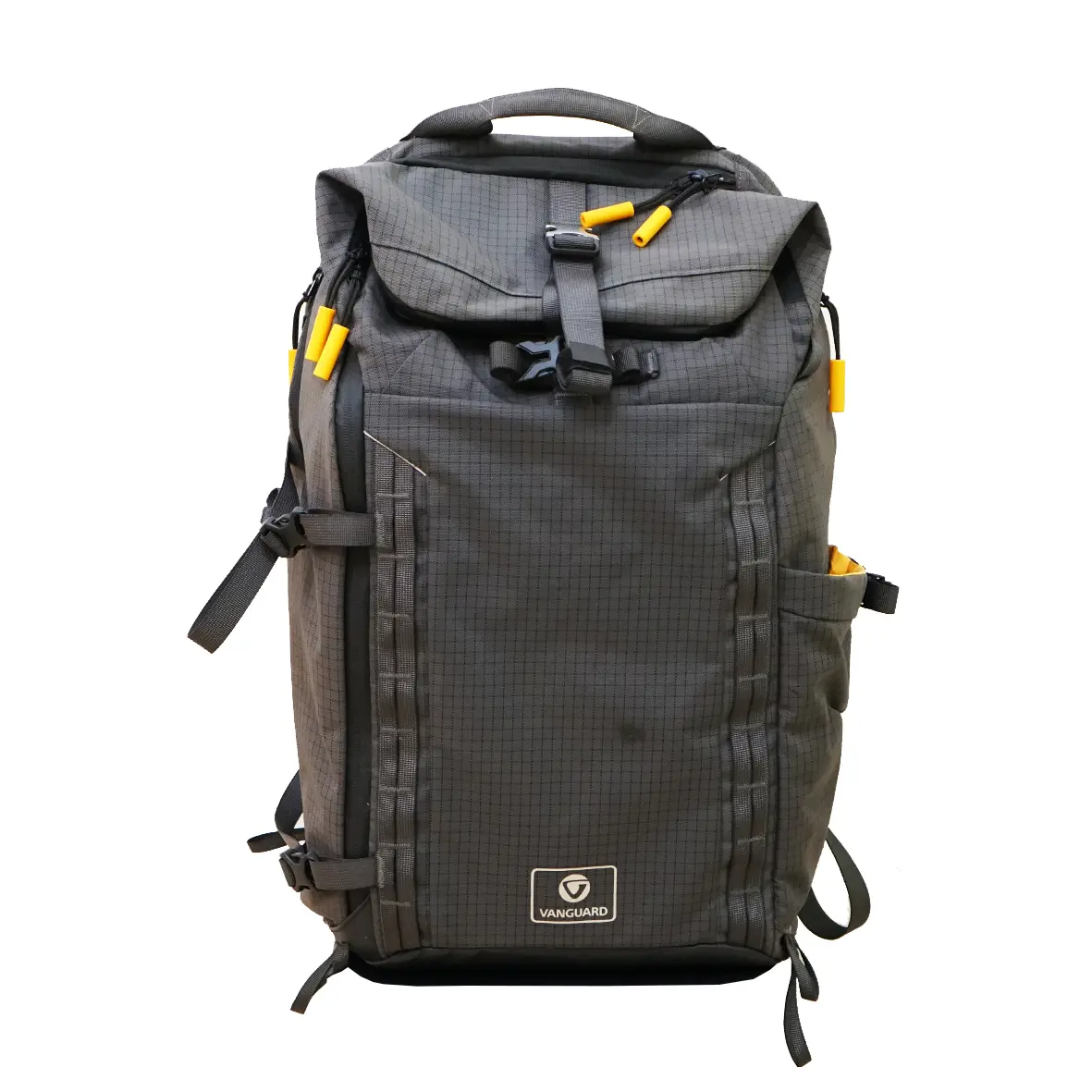
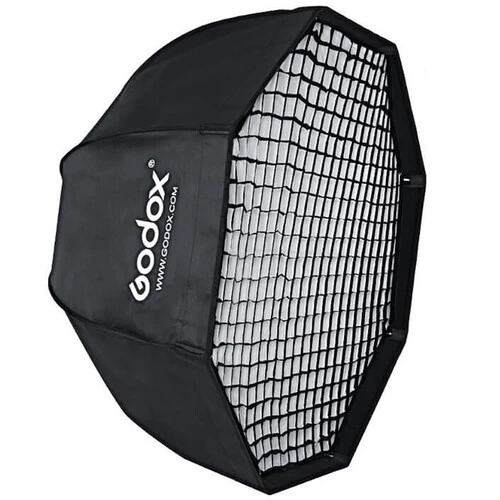
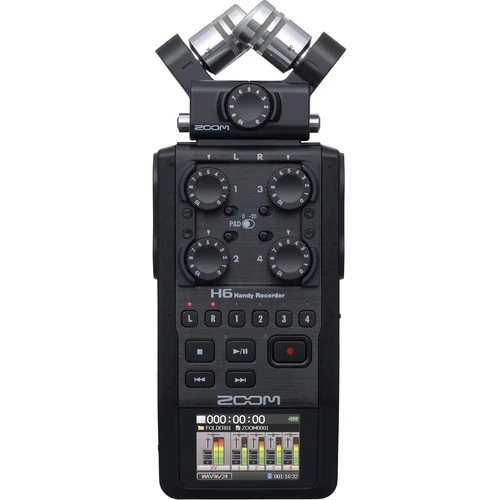
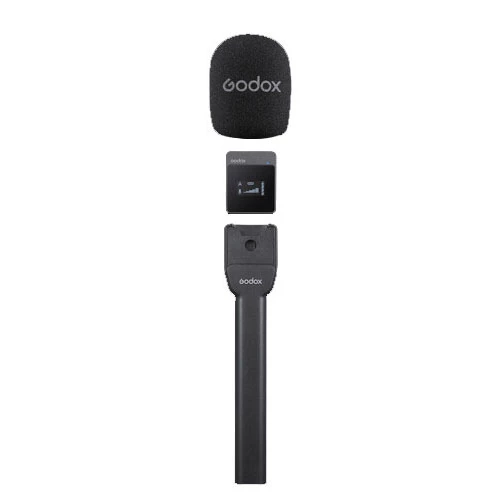
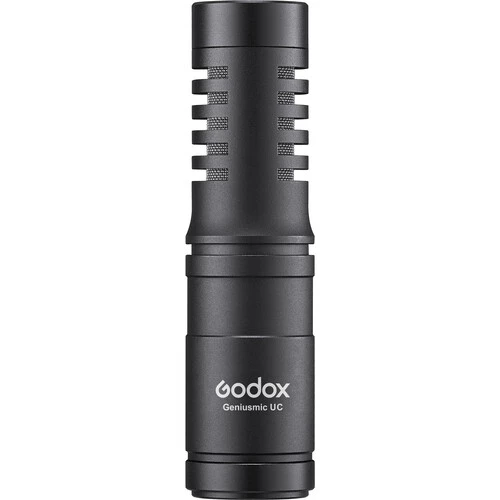
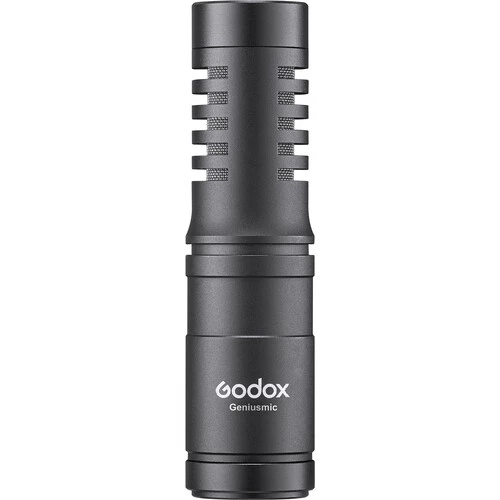
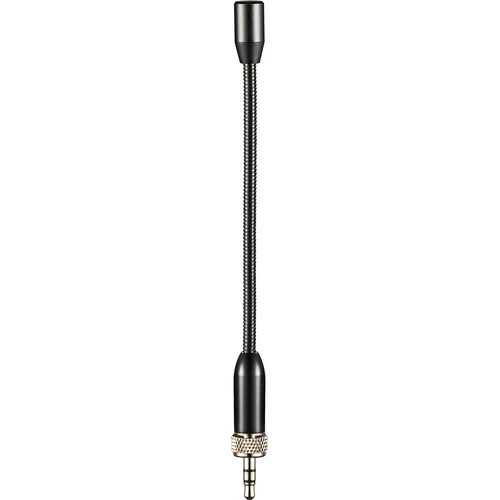
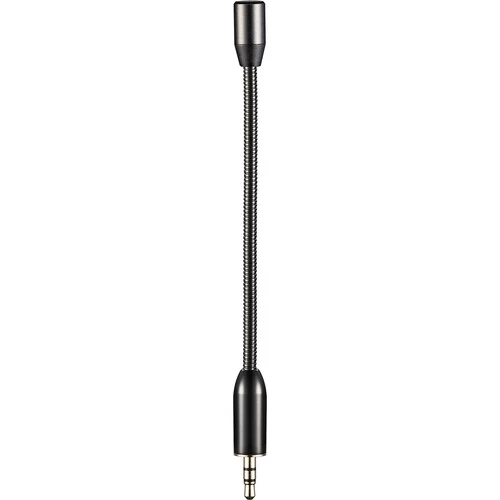
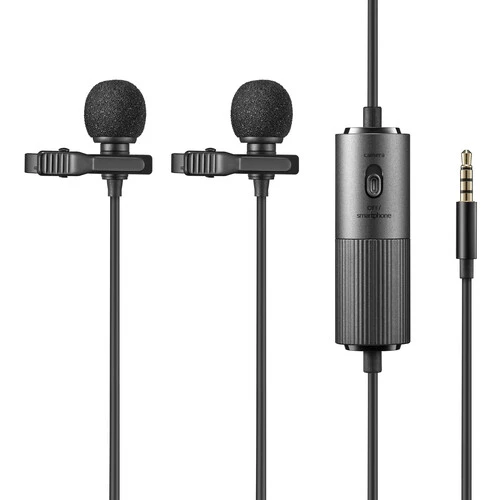
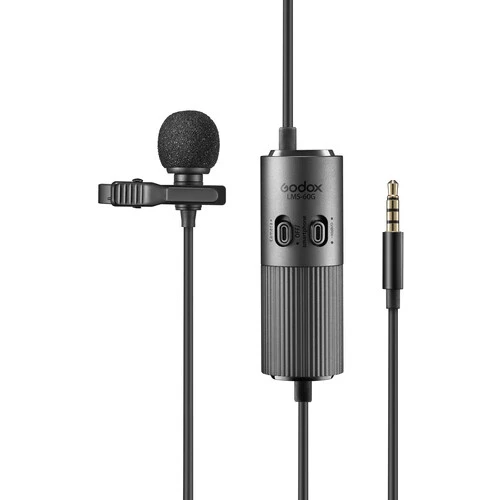
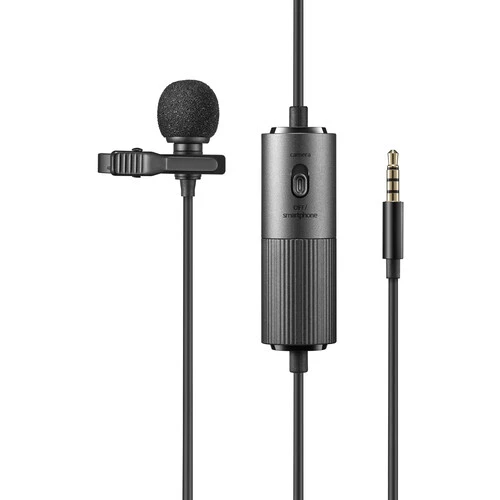
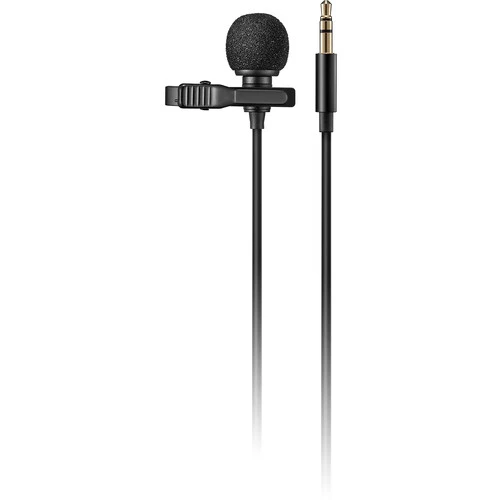
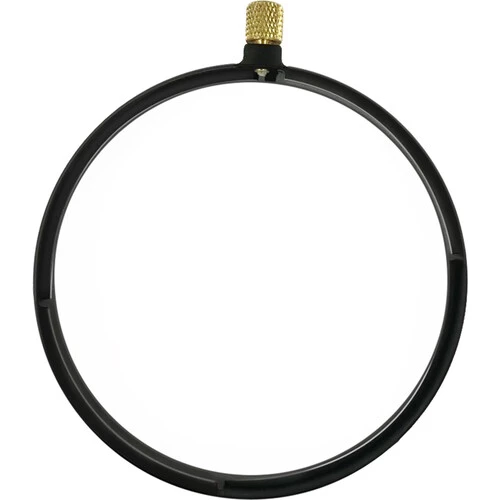
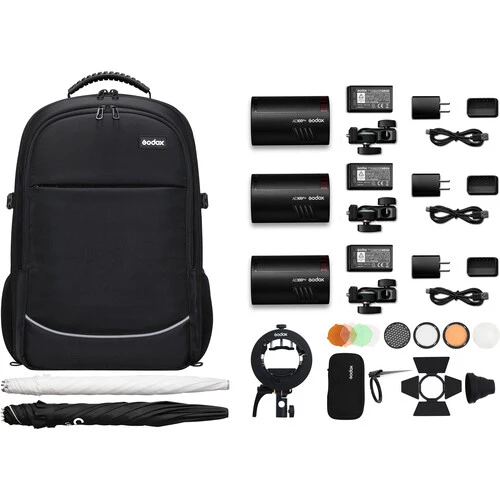
.webp)
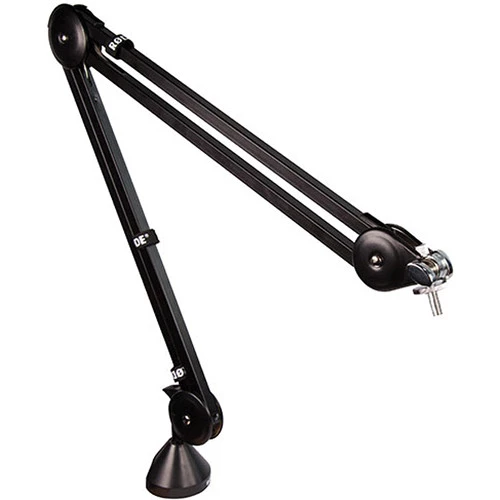
.webp)
